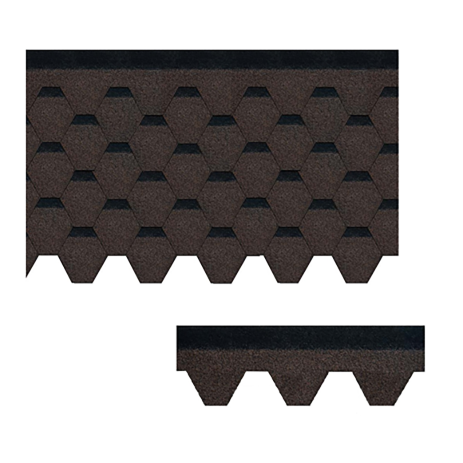
Nov . 30, 2024 14:17 Back to list
Durable Options for Granulated Roll Roofing Installation and Maintenance Tips
Understanding Granulated Roll Roofing A Comprehensive Guide
Granulated roll roofing is a popular choice among homeowners and roofing professionals alike. Known for its versatility, affordability, and ease of installation, this roofing material has become a staple in many residential and commercial roofing projects. In this article, we will explore the features, advantages, installation process, and maintenance requirements of granulated roll roofing.
What is Granulated Roll Roofing?
Granulated roll roofing is a type of roofing material that typically consists of asphalt and mineral granules. It is sold in large rolls, making it easy to transport and apply. The granules serve a dual purpose they provide UV protection, which helps to extend the life of the roof, and they enhance the aesthetic appeal by offering a range of colors and textures. Granulated roll roofing is often used for flat or low-slope roofs, making it an ideal option for garages, sheds, and low-pitched residential roofs.
Advantages of Granulated Roll Roofing
1. Cost-Effective Solution One of the primary reasons homeowners choose granulated roll roofing is its affordability. It is generally less expensive than other roofing options, such as tile or metal roofing. This makes it an attractive option for those looking to renovate or repair their roofs on a budget.
2. Easy Installation Granulated roll roofing is lightweight and easy to handle. Many homeowners opt for DIY installations, as the process does not require specialized tools or expertise. The rolls can be easily cut to fit the dimensions of the roof, making the installation process efficient.
3. Durability When properly installed and maintained, granulated roll roofing can last between 10 to 20 years, depending on the quality of the material and environmental factors. The granules help protect the asphalt from UV rays, which can degrade roofing materials over time.
4. Variety of Designs With a range of colors and textures available, granulated roll roofing can be aesthetically pleasing. This variety allows homeowners to choose a style that complements their home while ensuring functionality.
5. Weather Resistance Granulated roll roofing is designed to withstand various weather conditions, including rain, snow, and extreme temperatures. The granulated surface provides a level of protection against water pooling, which is vital for maintaining the integrity of low-slope roofs.
granulated roll roofing

Installation Process
1. Preparation Before installation, it is crucial to prepare the roof surface. This involves cleaning the existing roof of debris and repairing any damaged areas to ensure a smooth and secure application.
2. Laying the Rolls Begin by unrolling the granulated roofing material along the edge of the roof. It is vital to install the first layer with a slight overhang to allow for water runoff. The rolls should be aligned correctly, and seams must be staggered to prevent leaks.
3. Adhesion The roofing is typically adhered using asphalt cement or adhesive designed specifically for roll roofing. Apply the adhesive liberally along the roof surface, then press the rolled material into place, ensuring good contact with the underlying surface.
4. Sealing Joints and Edges Once the rolls are in place, it is important to seal all seams and edges with roofing cement. This step helps create a watertight seal to prevent leaks.
5. Final Inspection After installation, conduct a thorough inspection of the roof, checking for any gaps or areas that may need additional sealing. This final check ensures that the roof is well-protected against weather elements.
Maintenance of Granulated Roll Roofing
To extend the lifespan of granulated roll roofing, regular maintenance is essential. Homeowners should inspect the roof periodically for signs of wear, such as cracks, peeling, or loose seams. Keeping the roof clear of debris and addressing any issues promptly can prevent more significant problems in the future. Additionally, applying a protective coating every few years can further enhance the durability and appearance of the roofing.
Conclusion
Granulated roll roofing is an excellent option for those seeking an economical, durable, and easy-to-install roofing solution. Its many advantages, combined with straightforward maintenance requirements, make it a worthwhile investment for residential and low-slope commercial structures. Whether you’re building a new structure or looking to refurbish an existing one, granulated roll roofing provides a reliable and stylish option to meet your roofing needs.
-
Rubber Roofing Shingles - Durable & Weatherproof SBS Rubber Asphalt Shingles for Homes & Businesses
NewsJul.08,2025
-
Crest Double Roman Roof Tiles – Durable, Stylish Roofing Solution at Competitive Prices
NewsJul.08,2025
-
T Lock Asphalt Shingles Durable Roofing Solution for Long-lasting Protection
NewsJul.08,2025
-
Top Stone Coated Metal Roofing Suppliers & Manufacturers Durable Stone Coated Metal Tile Solutions
NewsJul.07,2025
-
How Many Bundles of Asphalt Shingles in a Square? Fast Roofing Guide & Tips
NewsJul.07,2025
-
How Long Should a Cedar Shake Roof Last? Expert Guide & Replacement Options
NewsJul.06,2025







